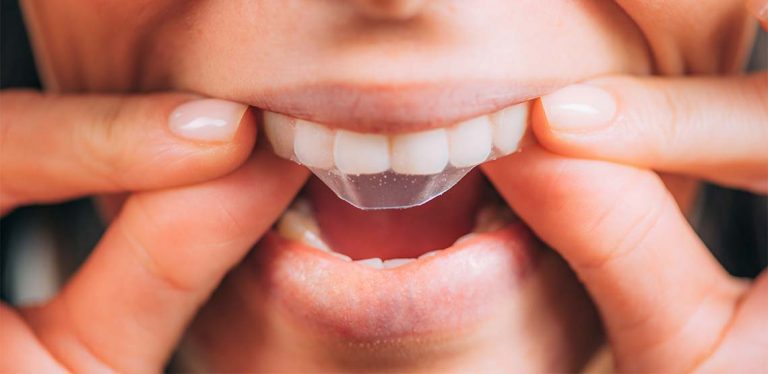How to Make Teeth Whiter
Naturally white teeth are rare, especially as we age. Over time, the food we eat and other habits, such as drinking wine or smoking, will impact the whiteness of our smile. Stained and off-color teeth are common, but most people find them unappealing, so we will teach you how to make teeth whiter.
Teeth whitening has become a fairly popular practice, and there are many options available to consumers. If you are looking to brighten your smile but you are not sure which option is best for you, look no further! We are going to look at how to make teeth whiter and discuss the most popular teeth-whitening options available today.
Before You Begin
It is important to note that the American Dental Association recommends all teeth whitening procedures, including at-home whitening, should be done under the supervision of a dentist. If you haven’t spoken to your dentist about whitening your teeth, make sure you consult with them before diving in.
Prevention is key to keeping your teeth white. Reducing your intake of coffee, tea, colas, red wine and smoking can all make a significant difference to the color of your teeth. Over time, the residue and acidity of products will impact your teeth and cause surface discoloration.
If reducing your coffee intake is out of the question, that is okay; instead, brush your teeth promptly and thoroughly after each cup. Visiting your dentist regularly for your scheduled cleanings is also an important step in maintaining white teeth.
1. Go to the Dentist
Your dentist is the best place to look for teeth-whitening products. Dentists are the experts in all things teeth, and they really should be your first stop even if you are going to try at-home whitening.
Dentists can recommend the best products for your teeth, and most importantly, they can identify whether your teeth are candidates for at-home whitening. Unfortunately, not all teeth can be lightened. If you have crowns, veneers, fillings in front teeth, or brown/blackened teeth, it is best to consult a dentist before trying any whitening product.
Products at the dentist’s office are often stronger and more effective than regular in-store or over-the-counter whiteners. These highly effective bleach-like products, of course, come with the hefty price tag.
2. Activated Charcoal
This trendy method of teeth whitening has been around for a long time and is surging in popularity once again. You’ve likely seen your favorite celebrity or talk-show hosts brushing their teeth with what looks to be black soot. This is activated charcoal.
While you may achieve results, dentists warn that this abrasive cleaning method is quite damaging to the surface of the teeth. Over time, continued charcoal use will degrade the tooth enamel and can cause sensitive, porous and even transparent teeth.
3. Whitening Toothpaste
Like activated charcoal, these whitening toothpastes often work by lifting teeth stains via abrasion. These products tend to be less abrasive and safer overall compared to activated charcoal.
However, abrasion will only address surface stains. For deeper stains, you will need to find a toothpaste that also contains a mild bleaching agent, such as a peroxide-based product. Even with a bleaching agent, these products tend to be much less effective than in-office procedures, as they are far less concentrated.
Many users report mild to moderate results using a whitening toothpaste.
Related Search Topics (Ads)
4. Whitening Pens and Strips
Whitening pens and strips work similarly by applying a bleaching agent directly to the teeth. The difference is that the pen allows for freehand application, while the strips allow for a whole-mouth application in one step.
The advantages of the pen whitening systems are that you can customize which teeth need to be whitened, and you can use the product without much notice.
The major drawback of the pen, however, is that there is no seal or guard placed over the teeth to protect the whitening agent after application. As a result, the whitening strips, which stay on your teeth for a prescribed amount of time, may achieve more prominent results due to the seal that the strip provides.
Consulting a Dentist
As we mentioned above, it is important to consult with your dentist before starting any teeth-whitening regimens. Dentists can help you to decide which product is most appropriate for your teeth, and they can help you set expectations for results. Even in-office whitening can be limiting, so be sure to discuss your ideal smile with your dentist.
Need help finding a dentist? Go to the American Dental Association website and use the Find-a-Dentist search tool to find a licensed practitioner near you.

